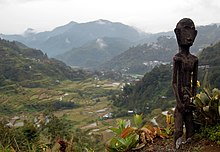1 Thessalonians chapter 1 "We always give thanks to God for you and mention you in our prayers, constantly remembering before our God and Father your work of faith and labor of love and steadfastness of hope in our Lord Jesus Christ..." We all need to remember to support and care for those who minister in the name of the Lord. It can very often be a thankless job with people demanding a lot from them and their time. I am familiar with people who spend most of their time in service to the Lord and try to encourage and commend them - although that is not why they do it. Our early missionaries, in this case Paul, Silvanus, and Timothy showed us the heart of God's work and led the way for us to follow. Do what you can to make a difference in this world for Jesus.
On this day
1981 When I didn't have a boyfriend that I was on call for I worked extra jobs or overtime at my job at Quality. On this day it said I took deliveries in the afternoon and then put in 2 hours of overtime on the Stuart job. I obviously don't recall that, but I do remember taking the company van and delivering framed pictures to JL Hudson company and our own two retail stores. And I usually had on high heels - I lived in them. It was an artsy kind of job and I guess we looked the part most of time. I have always been super social and on this day I talked to 8 people after I got home, including my two brothers. Today I was a slug compared to this.
1866 - The metric system was legalized by the U.S. Congress for the standardization of weights and measures throughout the United States.
Escalante Philippines
Visual art
Pottery and weaving are among the very first art forms showcasing Filipino artistic design and are evident from cave dwellings all over the country. Among these are mostly anthropomorphic earthenware jars dating from c. 5 BC to 225 AD. Weaving was mostly done by women, using fibers from abaca, pineapple, cotton, and bark to make clothes, rugs and hats. Baskets were mostly utilized to carry grain and other foods.[628][629]
Early Philippine sculpture is characterized by frontal nudity. One of the earliest forms is the bulols by the Ifugao people which serve as an assurance for bountiful harvests. The original functions of these sculptures are related to the ceremonies and beliefs of the tribes who created them. Arab and Russian missionaries also brought beveled type of carvings in the form of Okkil. The beginnings of this sculpture type started with the Islamization of Sulu. The Spanish colonization of the country did not hinder Filipinos creating sculptures for objects of adoration. During this time, sculptures of deities and saints were used to teach Filipinos Christian doctrines. During the American colonialism, worshippers of faith were not discouraged to sculpt in order to adorn churches. Filipinos' first exposure to painting happened when Spain conquered the Philippines and these were used as religious propaganda often displayed in churches. However, as education progressed and wealth increased, more and more artists started to shift from the traditional religious motifs to a more secular pattern of imagery.[630]
Paintings of early modernist painters such as Damián Domingo often still had a religious association but the art of Juan Luna and Félix Hidalgo showed a trend towards political statement. The first Philippine national artist Fernando Amorsolo used post-modernism to produce paintings that illustrated aspects of Philippine culture, while other artists such as Fernando Zóbel used both realistic and abstract techniques.
In the modern period, statuary was integrated with architecture in the Art Deco style. Examples can be seen in statues throughout the country especially in public parks and spaces.[631]
Enjoy the day! Make it memorable!! Happy birthday Rebecca, Elizabeth, Jeff and Sabrina!


No comments:
Post a Comment